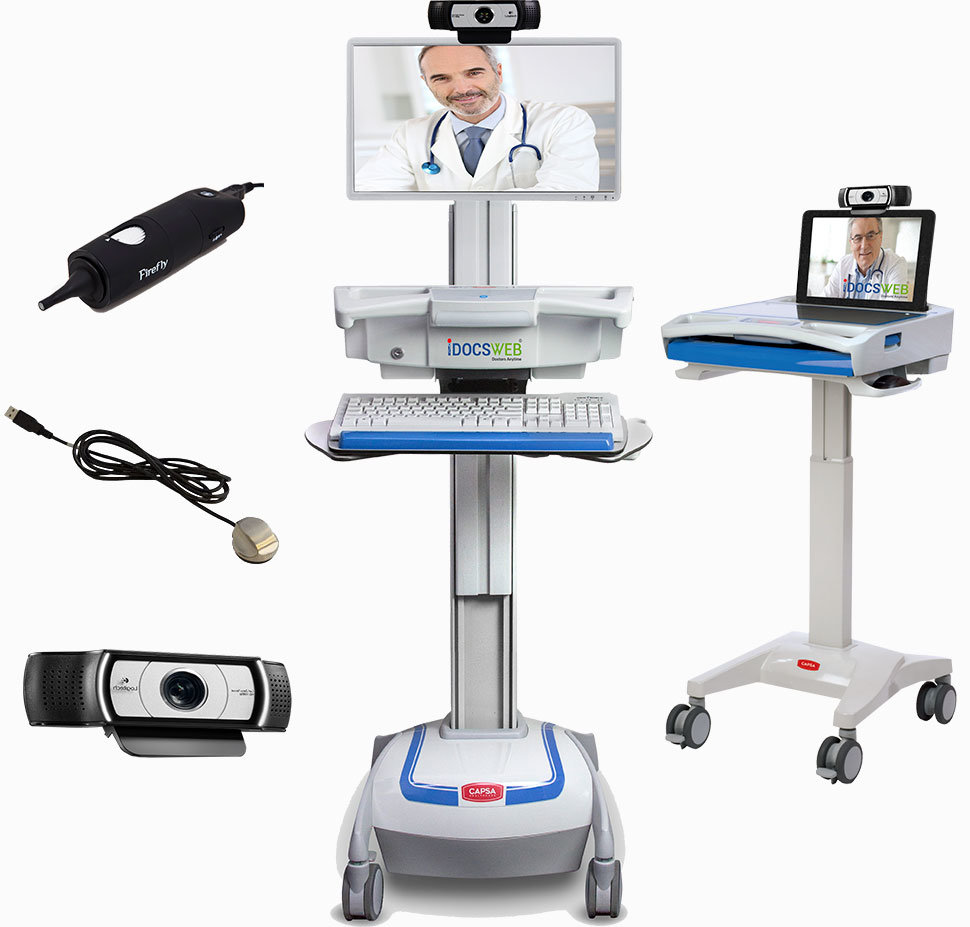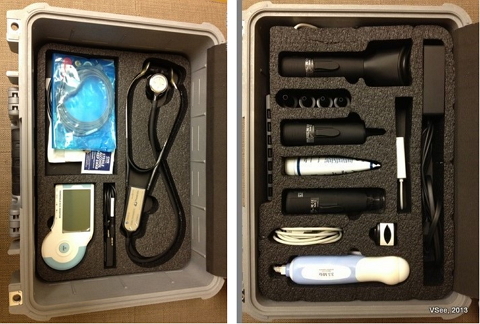Topic 5
Sectieoverzicht
-

Most people have access to basic telecommunications technology, like telephones, the internet, and computers. But many telemedicine solutions require more equipment than just those basics. Here’s a review of the types of telemedicine equipment a healthcare provider may need.
Telemedicine cartsThis equipment gives providers a mobile frame and storage to carry the cameras, computers monitors, keyboards, computers, and mobile medical devices. The carts look similar to standing work desks, with computer monitors attached at the top and wheels at the bottom for easy moving. These carts are usually used at hospitals or other large health care systems.

Telemedicine kiosks
The telemedicine kiosk looks like a photobooth and is usually stocked with all the equipment and commonly used mobile medical devices that are needed for a telemedicine visit.
Digital camera
A webcam is needed in order to have a video conference. There are also high-end, high-resolution digital cameras for crystal-clear video capture. The high-tech camera allows the healthcare professional to take detailed medical images and share them with a specialist at another location. It is usually used for store-and-forward telemedicine solutions between two healthcare providers.
Telemedicine kit
Healthcare providers who are routinely providing frontline care in remoted areas need a portable telemedicine kit. The kits often look like sturdy briefcases or large medical kits. Inside the kits are a small computer with an integrated screen, a camera, and simple medical devices.

Telemedicine software
A software system needs to be installed on the medical practice’s computers. These software solutions may require additional equipment like data storage hardware or servers
Patient medical record
Vidavo is the system that is used in Greece to process all the patient's medical data. There are also applications of this system. This makes work easier because doctors no longer need to carry a laptop or computer around, instead, all they need is a tablet or a phone.
When the patients visit the doctor, the doctors start to fill in the personal data of the patients in the application. Next, the medical history of the patients is fill in. After that, the reason for the visit will be entered. Then the doctor will test the necessary body functions that happen with a certain medical device. Think about a Blood pressure meter, Spirometer, Electrocardiography (ECG), Oxygen saturation measurement or blood sugar meter, these medical devices are all connected to the application through Bluetooth, which results in equal results and then the doctor can send the visit results to a specialist if necessary.

